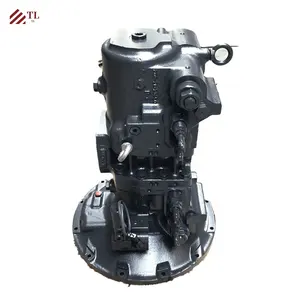Popular in your industry



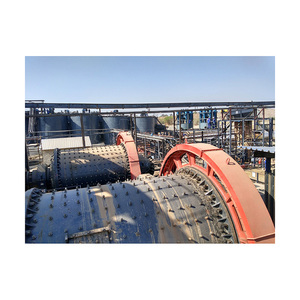
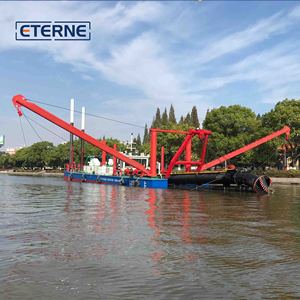
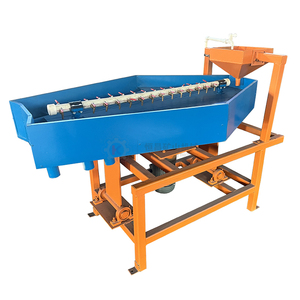



Related Searches:




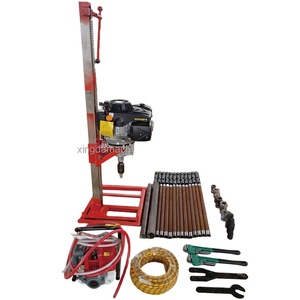














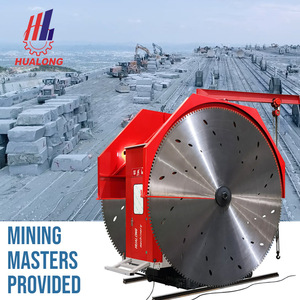


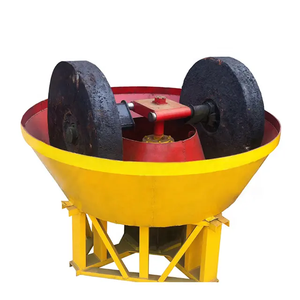
Top categories
About mining machinery
Types of Mining Machinery
Mining machinery refers to the different types of machines used in the mining process. These include loading machines, haulage machines, excavation machines, drilling machines, crushing machines, and processing machines. More details on each of these types follow.
- Loader
This is a type of equipment that is used to load material such as asphalt, demolition debris, dirt, feed, gravel, logs, raw minerals, etc., onto trucks, conveyors, or other machines. An excavator is an example of a loading machine.
- Haulage machinery
These are large vehicles that are used to transport large quantities of materials long distances. They include dump trucks, railroad cars, conveyors, etc. They are used to transport materials from the mine to the processing locations, from stockpiles to the processing units, and between the mining equipment and the processing units.
- Excavator
This is heavy equipment used to perform digging, handling, and other functions. An excavator is used to dig, install pipes, and do heavy lifting during construction. An example of an excavator is the dragline.
- Crusher machine
Crusher machines are used for crushing of materials such as rock, coal, limestone, etc into smaller pieces. They are used in the first stage of size reduction. An example is the mobile crusher used in the mining industry.
- Drill machine
This is a machine used for making holes in the ground. Drilling machines can be used to mine rocks, drill wells, or explore for mineral deposits. An example is the blasthole drill, which is used to break down rock and other materials in order to extract valuable minerals.
- Grinding machine
These are machines used to reduce the size of solid materials by mechanical shear, impact, and compression methods. Grinding machines break down material into fine particles for mineral beneficiation and extraction processes. An example is a ball mill, which is used to grind, blend, and mix materials for use in mineral dressing processes, paints, pyrotechnics, ceramics, and selective laser sintering.
- Conveyor machine
This is a machine that transports materials, packages, or objects from one place to another. Conveyors are used to move large volumes of bulk materials such as coal and aggregates from one point to another in factories, warehouses, and other mining settings.
Specification and maintenance of mining machinery
Various types of mining machinery have different specifications and maintenance requirements. The following table lists some common mining machinery along with their specifications and maintenance tips.
- Specification and maintenance of mining machinery
Crushers: The specifications of crushers vary depending on the type of crusher. Regular maintenance is essential for crushers to perform optimally and extend their lifespan. This includes monitoring wear and tear, lubrication, replacing parts, and following manufacturer guidelines.
Conveyors: Conveyor specifications vary depending on the type, size, and purpose. Conveyor belts and components need to be inspected regularly to ensure they work properly. Routine maintenance is also necessary to avoid blockage, wear, and potential safety hazards.
Excavators: Excavators have different specifications depending on the size, weight, and capacity. Excavators should be maintained regularly to ensure the hydraulic system, engine, and bucket are in good working order. The maintenance includes checking for leaks, lubrication, fuel system inspection, and filter replacement.
Mining drills: The specifications of mining drills vary depending on the type and model. Mining drills need to be maintained to ensure they have sufficient torque and drilling capacity. The maintenance includes checking the hydraulic system, inspecting the drill head, lubricating, and replacing the drill bit when it is worn.
Loaders: The specifications of loaders depend on the type, model, and capacity. Regular maintenance is required to ensure the loader is in good working order. This includes checking tires or tracks, lubrication, hydraulic system inspection, and fuel system inspection.
Magnetic separators: The specifications of magnetic separators vary depending on the type, model, and strength of the magnetic field. Regular maintenance is essential to ensure the magnetic separator functions properly. The maintenance includes checking the magnetic field strength, cleaning the magnetic rods, and inspecting for any damage or wear.
Sieves: The specifications of sieves vary depending on the type, mesh size, and capacity. Regular maintenance is necessary to ensure the sieves work properly and efficiently. This includes checking the screen for damage or wear, replacing worn screens, and cleaning to prevent clogging.
Pumps: The specifications of pumps vary depending on the type, model, and flow rate. Regular maintenance is necessary to ensure that pumps operate safely and efficiently. This includes checking for leaks, lubricating the bearings, and inspecting and replacing worn seals and impellers.
Grinding mills: The specifications of grinding mills vary depending on the type, model, and capacity. Regular maintenance is necessary to ensure the proper functioning of the mills. This includes monitoring the wear of the grinding media, lubricating the bearings, and inspecting and replacing the liners when worn.
Scenarios of mining machinery
As the backbone of the mining industry, mining machinery plays a vital role in various mining scenarios and helps mining enterprises improve efficiency and productivity.
Excavators are commonly used in open-pit mining. They can carry out a range of tasks, from overburden stripping to ore excavation and transportation. Excavators can also be used to dig ore bodies and create mining faces, thereby playing a key role in the entire mining process.
In the process of open-pit mining, mining dump trucks are often used for overburden and ore transportation. Their large load capacity and strong power can effectively improve transportation efficiency and reduce transportation costs. In addition, mining dump trucks are usually used in conjunction with excavators, which can also play a role in the mining and loading of minerals.
Drilling rigs are essential equipment for mining exploration and development. They are often used in open-pit mining and underground mining to drill blast holes or exploration boreholes. By accurately controlling the direction and depth of drilling, the drilling rig can provide valuable geological data for mining operations, thereby improving the success rate of ore discovery and development.
Crushers are used to break down large ore bodies into smaller particles. They are widely used in open-pit mining and underground mining operations. The primary crusher is often used at the mining face to break large rocks into more manageable sizes, while the secondary and tertiary crushers further crush the ore to the required particle size, which is conducive to the next stage of ore processing and mineral separation.
Mining conveyor belts are often used for ore transport in open-pit mines. They can transport ore over long distances, reducing the need for manual transportation and minimizing energy consumption. In addition, mining conveyor belts are also commonly used in the transportation of coal, minerals, and other bulk materials, playing an irreplaceable role in material handling in mining operations.
How to choose mining machinery
When choosing mining machinery, it is important to consider the needs and requirements of the project. This involves assessing the scale, type, and other specifications of the mining activities to determine the appropriate equipment.
It is crucial to do some research on what kind of materials are being mined. Different types of mining machinery are specifically designed to deal with certain types of materials. For example, impact crushers are used to crush soft minerals and marble, while jaw crushers are used to crush hard minerals and metals. Knowing the material type is essential in ensuring the equipment will be effective and efficient in mining operations.
Size and scale of the project. Large-scale open pit mining projects will require different equipment than small-scale underground mining. The size and scale of the mining project will determine the capacity and output of the machinery needed.
Power source. Consider the different power options for mining equipment. Choose equipment that uses fuel, electricity, or renewable energy sources. Select a power source that is suitable for the mining project's location and environmental regulations.
Efficiency and productivity. Select mining equipment that is efficient and productive. Look for machinery with high processing speeds, large capacities, and low energy consumption. Efficient equipment will help to increase productivity and reduce operating costs.
Reliability and safety. Choose mining equipment that is reliable and safe to use. Look for well-built machines with durable components and strong construction. The machinery should comply with safety standards and have features to protect operators. Selecting reliable and safe equipment will help to prevent accidents and downtime.
Cost and budget. Consider the initial cost, maintenance expenses, and operating costs of the mining equipment. Determine a budget and select machinery that offers good value for the investment. Look for equipment with low maintenance requirements and high efficiency to reduce long-term costs.
It is important to work with a knowledgeable supplier to understand the options available and select the machinery that best suits the mining project's needs.
Q&A
Q: What are the latest trends in mining machinery manufacturing?
A: The mining industry is embracing automation technology to enhance safety, increase productivity, and optimize operational efficiency. Automated machinery can improve work efficiency, reduce the risk of accidents, and cut operating costs. Another trend is the integration of clean energy sources, such as solar power, hydrogen fuel cells, and battery technology, to reduce carbon emissions and environmental impact. Mining machinery manufacturers are developing energy-efficient equipment to reduce fuel consumption and greenhouse gas emissions. Efficient equipment can help reduce operational costs and comply with strict emission regulations.
Q: What are the benefits of using mining machinery?
A: Mining machinery provides various benefits for enterprises. First, they can improve operational efficiency and increase production capacity. Advanced mining machinery can help mining companies process more materials in less time, which enhances the company's productivity and profitability. Secondly, mining machinery can enhance workplace safety. Automated and intelligent mining machinery can replace manual labor in high-risk and harsh environments. Thirdly, mining machinery can help reduce energy consumption and environmental impact. Some energy-efficient mining machinery can optimize energy usage and minimize greenhouse gas emissions. Finally, mining machinery can help companies explore new mining areas. Advanced mining equipment can improve the accuracy of exploration and enable companies to discover new mineral deposits.
Q: What are the different types of mining machinery?
A: Mining machinery is divided into two main categories: surface mining machinery and underground mining machinery. Surface mining machinery includes draglines, excavators, and haul trucks. They are used to remove overburden and extract coal, minerals, and other materials from the surface of the earth. Underground mining machinery includes drills, loaders, and haul trucks. They are used to extract minerals from deep underground deposits. Crushing and grinding machinery are used to process mined materials. They include crushers, grinders, and screeners. Material handling machinery includes conveyor systems and stackers. They are used to transport and store mined materials.





